The Cat Came Back
__________________________
page originally published on 14 October 2011; latest edit: 7 December 2021
__________________________
The Cat Came Back (Harry S. Miller) — published in 1893
Wikipedia says:
The song is humorous in nature, telling a silly tale about “ole Mister Johnson” who had an “ole yaller cat” that he did not want, and when he tried to get rid of the cat, the cat kept coming back:
But the cat came back, he couldn’t stay no long-er,
Yes the cat came back de very next day,
the cat came back—thought she were a goner,
But the cat came back for it wouldn’t stay away.
In Miller’s original, the cat finally died when an organ grinder came around one day and:
De cat look’d around awhile an’ kinder raised her head
When he played Ta-rah-dah-boom-da-rah, an’ de cat dropped dead.
The first commercial recording of the song was ca. 1894 for the Columbia Phonograph Company, Washington D.C., performed by Charles Marsh.[2] “The Cat Came Back” was later recorded by Fiddlin’ John Carson (OKeh catalog #40119) in April 1924.
__________________
The song “And the Cat Came Back,” recorded by Fiddlin’ Doc Roberts (as himself and under various pseudonyms) and others, seems to be an unrelated traditional.*
______________________
Fiddlin’ John Carson — recorded in April 1924; issued on OKeh 40119, c/w “I Got Mine”
.
Riley Puckett — recorded on 29 September 1937 in New York, NY (Decca matrix 62632) and issued on the single Decca 5442, as the B-side of “Short Life of Trouble”
.
 Doc and Chickie Williams — date unknown
Doc and Chickie Williams — date unknown
Doc Williams died on Monday, 31 January 2011, at the age of 96. Obituaries indicate that a recording of “The Cat Came Back” by Doc Williams sold more than a million records on a Toronto label.
Excerpts from an obit by John Raby, for The Associated Press, dated Monday, 7 February 2011:
In the years before World War II, his Wheeling, W.Va.-based radio show built him a following in Maine, Vermont and the Canadian provinces – places where he later toured, and where some fans still tap in time to songs from his band, the Border Riders.
“I don’t know if the state of West Virginia had a better ambassador than Doc Williams,” Country Music Hall of Famer Bill Anderson told The Associated Press on Tuesday. “You thought of Doc Williams, you thought of Wheeling, you thought of the Jamboree,” Anderson said, referring to Jamboree USA, one of radio station WWVA’s most popular programs.
.
Merle Travis — date unknown; probably from the album Unreleased Radio Transcriptions 1944-1949, released in 1991 (a,b) or 1992
.
Yodeling Slim Clark — Continental Records 45rpm issue; recording date unknown — possibly a non-US issue of the c. 1950 US release Continental 8063, c/w “The Swiss Yodelers”
.
Sonny James — issued in September 1956 on the single Capitol F3542, as the B-side of “Hello Old Broken Heart” (See the page The Cat Came Back – selected 1960s recordings for additional recordings of the song by Sonny James.)
.
Cisco Houston — The recording appears on the album The Folkway Years: 1944-1961 (Smithsonian Folkways), but I haven’t yet been able to date it with more precision.
From Ciscohouston.com:
- lyric
- live recording, undated (MP3)
.
Cisco Houston — recorded at the 1960 Newport Folk Festival, 24-26 June 1960; issued on the LP The Newport Folk Festival 1960, Volume 2, Vanguard VRS 9084
.
Tex Morton — b. Robert William Lane, 8 August 1916, Nelson, New Zealand; d. 23 July 1983, Sydney, Australia
From an article, dated 16 June 2000, at nzedge.com (image added):
 New Zealander Tex Morton lived a life of breath-taking achievement. He attained fortune and huge international fame in several careers: a recording star (300 songs), singer-songwriter, stage artist (touring sensation in North America, Europe, Australasia), circus entrepreneur, best-selling comic writer, Hollywood screen actor, and with a Doctorate from McGill University, a world authority and renowned performer of hypnotherapy.
New Zealander Tex Morton lived a life of breath-taking achievement. He attained fortune and huge international fame in several careers: a recording star (300 songs), singer-songwriter, stage artist (touring sensation in North America, Europe, Australasia), circus entrepreneur, best-selling comic writer, Hollywood screen actor, and with a Doctorate from McGill University, a world authority and renowned performer of hypnotherapy.
He was the top selling recording artist in Australasia in the 1930’s, outselling Bing Crosby, Gracie Fields and the young Frank Sinatra; and in the 1950s was one of the most famous entertainers in North America.
(below) From the Tex Morton biography at AllMusic (image added):
 In 1949, Morton decided to move to the USA and, having by then learned an act using hypnotism as well as his other talents, he moved to Los Angeles. After spending two years working as a singer and acting on radio and in some films, he began to appear as The Great Doctor Robert Morton – the World’s Greatest Hypnotist. In 1951, he toured the USA and Canada with his one-man show on which he sang, did recitations, trick shooting, mind reading and hypnotism. He proved so popular that he set attendance records in many cities, including St. Louis, Boston and Vancouver and in Toronto his show outran South Pacific. Ever the showman, he used many gimmicks to attract the crowd, including stunts such as walking blindfold on the parapet of the tallest building in the town.
In 1949, Morton decided to move to the USA and, having by then learned an act using hypnotism as well as his other talents, he moved to Los Angeles. After spending two years working as a singer and acting on radio and in some films, he began to appear as The Great Doctor Robert Morton – the World’s Greatest Hypnotist. In 1951, he toured the USA and Canada with his one-man show on which he sang, did recitations, trick shooting, mind reading and hypnotism. He proved so popular that he set attendance records in many cities, including St. Louis, Boston and Vancouver and in Toronto his show outran South Pacific. Ever the showman, he used many gimmicks to attract the crowd, including stunts such as walking blindfold on the parapet of the tallest building in the town.
________________
There is an extensive Tex Morton discography at the site PragueFrank’s Country Music Discographies. Prague Frank says a recording of “The Cat Came Back” by Tex Morton was issued on Festival FL-7257 FX 10356. The side was recorded in Sydney, Australia in either 1960 or 1961.
____________________
Tex Morton — c.1960
__________________
Tim Morgon – from the album Live at Prison of Socrates, recorded on 10 August 1963; the location was a very popular coffee house on Balboa Island in Newport Beach, California
articles about Tim Morgon and The Prison of Socrates:
- Newport’s folk singer — by Elia Powers; published August 7, 2005 in the Los Angeles Times (link updated, 10/1/2021)
- He was once bigger than the Beatles; do you know his name? — by Keith Sharon; published on 3 May 2014 in the Orange County Register
- The Prison of Socrates — by Tim Morgon; published c.2000 at TalesofBalboa.com
.
Randy and Betsy (portrayed by Randy Boone and Roberta Shore) — in The Virginian, Season 3, Episode 10 “Return a Stranger” — originally broadcast on Wednesday, 18 November 1964
- The following video includes only the audio, with a slideshow added by the video creator.
.
Marc Field from his LP Chim Chim Cheree and other Favorite Songs for Children, Rocking Horse Records, c.1964
presently unavailable
__________________
Sonny James — from his 1965 LP You’re The Only World I Know
.
Sonny James — clip from the 1967 film Hillbillys in a Haunted House
.
The Sting Rays — issued in 1967, according to the provider, on Wellhaven 8852
The A-bomb fell just the other day
The H-bomb fell in the very same way
Russia went, China went, and then the U.S.A.
The human race was finished, without a chance to pray
But the cat came back the very next day…
.
Lee Moore – 1968
A commenter at Youtube says,
This version was recorded for Rural Rhythm Records out of Arcadia California in 1968, and Lee is backed by Red Smiley’s Bluegrass Cut-Ups on this recording…. in the mid to late 1960s Rural Rhythm recorded albums by a ton of different personalities from WWVA….
presently unavailable
_____________________________
Continue on to page 2 of 2.
______________________
* All recordings of the “old time fiddle” style tune “And the Cat Came Back” (aka “And the Cat Came Back the Very Next Day”) that I’ve come across in video libraries are instrumentals that are typically performed by either a solo fiddler, guitarist, or banjoist, or by a string band containing at least one fiddler. A fiddle solo accompanied by one guitar is common, as are performances by string bands containing four, five, or more instruments. Most versions of “And the Cat Came Back” that I’ve heard sound similar, and the tune’s melody sounds nothing like that of Henry S. Miller’s “The Cat Came Back.” Not to these ears anyway. I’m no authority, and haven’t consulted any experts in determining that, in my opinion the two are probably entirely different songs, with different histories. While it is possible that the Harry S. Miller song “The Cat Came Back” provided the inspiration for “And the Cat Came Back,” and I imagine that sections of the latter could function as releases or interludes if inserted into arrangements of the former, I’ve yet to hear a single performance or recording in which the two are combined in any way.
The following contribute to the confusion regarding the two songs:
Facts
- Some recordings of the fiddle tune are titled “And the Cat Came Back the Very Next Day,” which is also a line in the lyric of the Miller song.
- Some recordings of the fiddle tune are titled “The Cat Came Back,” the same as the original title of the Miller song.
Claims
- According to Wikipedia, Miller’s song has “entered the folk tradition and been recorded under variations of the title — “But the Cat Came Back,” “And the Cat Came Back,” etc.” It may have entered the folk tradition, but that doesn’t mean that it’s related to the Fiddlin’ Doc Roberts tune.
- Wikipedia claims, probably incorrectly, that Fiddlin’ Doc Roberts recorded the Miller song.
________
Selected recordings of “And the Cat Came Back,” aka “And the Cat Came Back the Very Next Day”:
- Fiddlin’ Doc Roberts — recorded by Fiddlin’ Doc Roberts (f) and Edgar Boaz (g) as “And the Cat Came Back the Very Next Day,” on 13 November 1925; issued on Gennet 3235, c/w “Billy in the Low Ground”
- Fiddlin’ Doc Roberts (as “Fiddlin’ Jim Burke”), accompanied by
John Booker** on guitar — recorded at Gennett Recording Studio on 27 August 1927; mx# G13055 (aka 13055), issued on Silvertone 8179, c/w “Virginia Hills Mountaineers” — Country Music Records: A Discography, 1921-1942, p. 753, indicates that this recording was released under several pseudonyms (Fiddlin’ Jim Burke, Jim Burke, Fiddlin’ Frank Nelson, Fiddlin’ Bob White, and Bob White), and on numerous label/catalog number combinations.- 78discography.com
- Prague Frank’s Country Music Discographies — “Fiddlin'” Doc Roberts page
- Country Music Records: A Discography, 1921-1942, by Tony Russell, Bob Pinson, pp. 752-753
- Fiddlin’ Doc Roberts (as Fiddlin’ Frank Nelson) — issued as the B-side of “Buck Creek Gal” on Challenge 307 — Some sites give the title of the A-side as “Mock Creek Gal,” though the title on the label below (left) is clearly “Buck Creek Gal.” Country Music Records: A Discography, 1921-1942, p. 753, identifies the B-side, titled “And the Cat Came Back,” as Gennett mx# 13055, which was recorded at Gennett Recording Studio on 27 August 1927 — see the “Fiddlin’ Jim Burke” release of the same matrix number above — and identifies the performer credit “Fiddlin’ Frank Nelson” as another pseudonym of Fiddlin’ Doc Roberts.
- Norman Blake — from the 1999 album Far Away, Down on a Georgia Farm
- Erynn Marshall & Chris Coole — from the 2007 album Meet Me in the Music
- Anna Roberts-Gevalt (fiddle), Joe DeJarnette (guitar) — uploaded 4 October 2010
- Camp Canada Old Time Jam, Clifftop 2012; featuring the following musicians: Scott Prouty – fiddle, Frank Evans – banjo, Conny Nowe – guitar, Pam Gawn – fiddle, Heather Coiner – banjo, Dara Weiss – guitar
- Wednesday Night Old Time Jam at the Trolley Stop, Dayton OH USA, June 2012, with Rick Good, Ben Cooper, Sharon Leahy, Dan Gellert, Mary, Rick Donahoe, Lynn, Big Ben, Doug, Ryan and others
- Eric Cowles — published on 5 January 2013
- Bob White – old time jam at BUW, 2013; published on 6 March 2013
- Lonnie Osborne (fiddle) and Chris Grigsby (guitar) — published on 8 August 2013
- Saluda Grade String Band — 27 June 2014, at the Saluda Grade Café, in Saluda, NC
- Alan Dillman and Breccia Wilson – fiddles
Tom Heck – banjo
Todd Neel – guitar
Becky Osteen – bass
- Alan Dillman and Breccia Wilson – fiddles
- Jacksonville Old-Time Jam — from the album Big Hoedown, released on 31 July 2014
- Nikos Pappas, accompanied by flatfooting (buckdancing) by Moonshine V — at Sewellfest, Pikeville, Tennessee; published on 9 September 2015
____________________________
** Prague Frank’s “Fiddlin'” Doc Roberts page gives the name of the accompanying guitarist for the 27 August 1927 Doc Roberts recording session at Gennett Recording Studio that produced “And the Cat Came Back” (Gennett matrix G13055) as “John Booker,” while Country Music Records: A Discography, 1921-1942, p. 753, indicates that the accompanying guitarist was “Joe Booker.”
Pages: 1 2










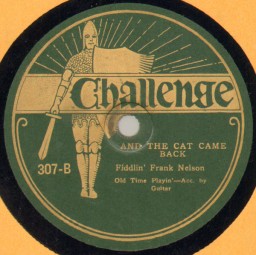





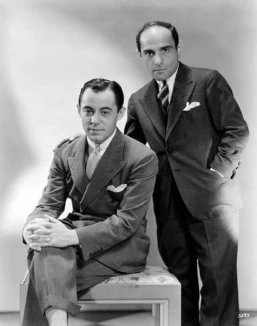

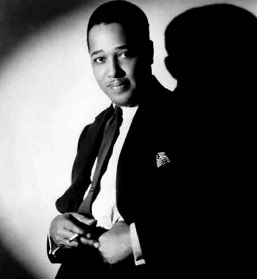


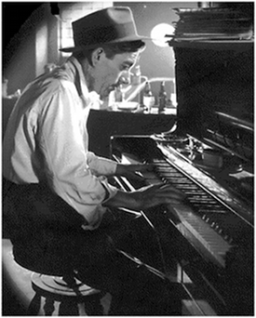
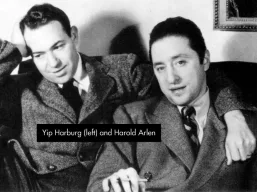




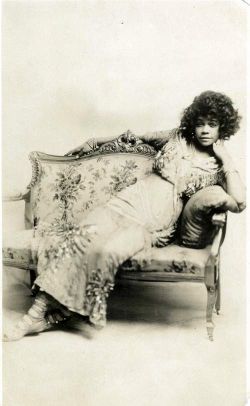










1 Comment (+add yours?)